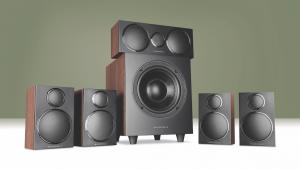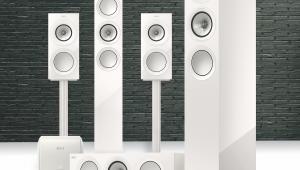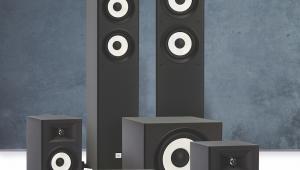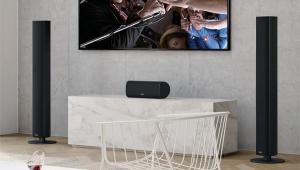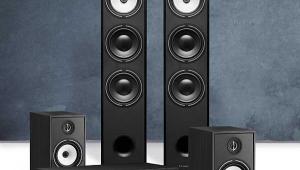Bose Soundtouch 20 SII review
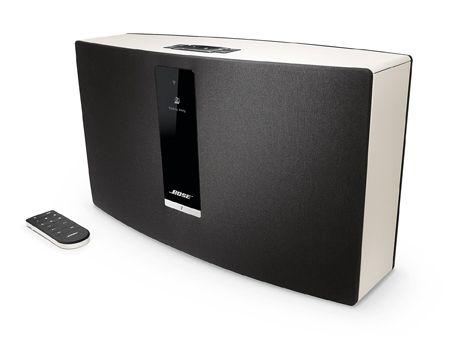
Bose is a relative newcomer to the multiroom lark, but as ever it likes to do things a little differently. Its SoundTouch range uses bog-standard 802.11 b/g Wi-Fi to operate but it manages to be simultaneously more versatile and less convenient than the likes of Sonos and Pure. More versatile in that its speakers have handy (and rather impressive) OLED display windows and physical remote controls to complement the smartphone and desktop apps, but less convenient in that its range of online streaming services is pitifully small.
For owners of iPhones and iPads it has the convenience of AirPlay, which allows you to browse and stream from an iTunes library or Deezer account more easily than using the Bose app. AirPlay also offers a means of streaming from Spotify Connect if you don’t have a Premium account, plus metadata is transmitted and displayed regardless of the source. Yet Bluetooth is absent so Android devices can only use sources that integrate fully with the Bose app (in other words, if you have Spotify it must be a Premium account).
The speakers themselves are fashioned from high-quality plastic with an inoffensive black and white livery. Socketry comprises Ethernet, a 3.5mm input and USB (the latter provided for the process of setup only). To do this you install and run the Bose desktop app, and hook up a speaker to a computer using the provided USB cable or wirelessly by running the app on a smartphone/tablet. Type out the answers to a few questions to get your network and music libraries on board and you’re up and running.
The desktop app is the polar opposite of Sonos’s, with ultra-large fonts that are probably visible from space. It’s also more logically laid out, so it's easy to tweak settings and set presets to internet radio stations or music library playlists. Select Spotify, though, and it tells you to use your smartphone or tablet.
You can add additional speakers and group them easily enough. A ‘tray’ at the bottom of the app shows your various speakers and groups, with the host speaker clearly marked out. You can run up to six units simultaneously but the six presets have to be the same across the whole system. You can, however, create multiple groups and move so-called guest speakers from one group to another, but each group must have a different host speaker. For an instant party you can simply select a 'play everywhere' mode.
Having a physical remote control is great if you’re using the SoundTouch, want to quickly change sources, skip tracks, alter the volume, etc, and don’t have the app-running device to hand. There’s no browsing facility on the remote or on the speaker but there are six preset buttons on both. For a device that offers access to thousands of internet stations, that number soon starts to feel insufficient and the presets can only be changed using one of the apps, not with the remote or on the speaker itself. And, although re-tuning can be slow, one press of a button on a remote is often quicker than using an iPhone and delving in to the app. Anyway, you might be using the phone while someone else wants to change source...
The list of supported formats is short, but includes hi-res Apple Lossless files as well as MP3, WMA and AAC. I liked the fact that the controller app only listed compatible files when browsing my music library. On the other hand, I kept having to remind myself to manually re-sync the library every time I imported any tracks to iTunes.
Playing Chris Isaak’s Wicked Game, the SoundTouch 20 suffers, like the Samsung Shape, from an overexcited bass response that can undermine some good work done at the other end of the frequency range. Yet it’s not profoundly bassy as the Samsung and its vocals sound a little more excitable. There is plenty of energy here, and the speaker is well-endowed in terms of power with reasonable levels of detail in the mid and upper-range. But, overall, this lacks the refinement in terms of performance that it offers in terms of design.
Specification
Drivers: Not specified
Onboard power: Not specified
Dimensions: 188(h) x 314(w) x 104(d)mm
Weight: 3.2kg
Features: Ethernet, 3.5mm and USB inputs; built-in Wi-Fi; OLED display; MP3, WMA, AAC and Apple Lossless support; IR remote; app control/setup; Spotify and Deezer support; six presets; Play Everywhere mode
 |
Home Cinema Choice #351 is on sale now, featuring: Samsung S95D flagship OLED TV; Ascendo loudspeakers; Pioneer VSA-LX805 AV receiver; UST projector roundup; 2024’s summer movies; Conan 4K; and more
|




